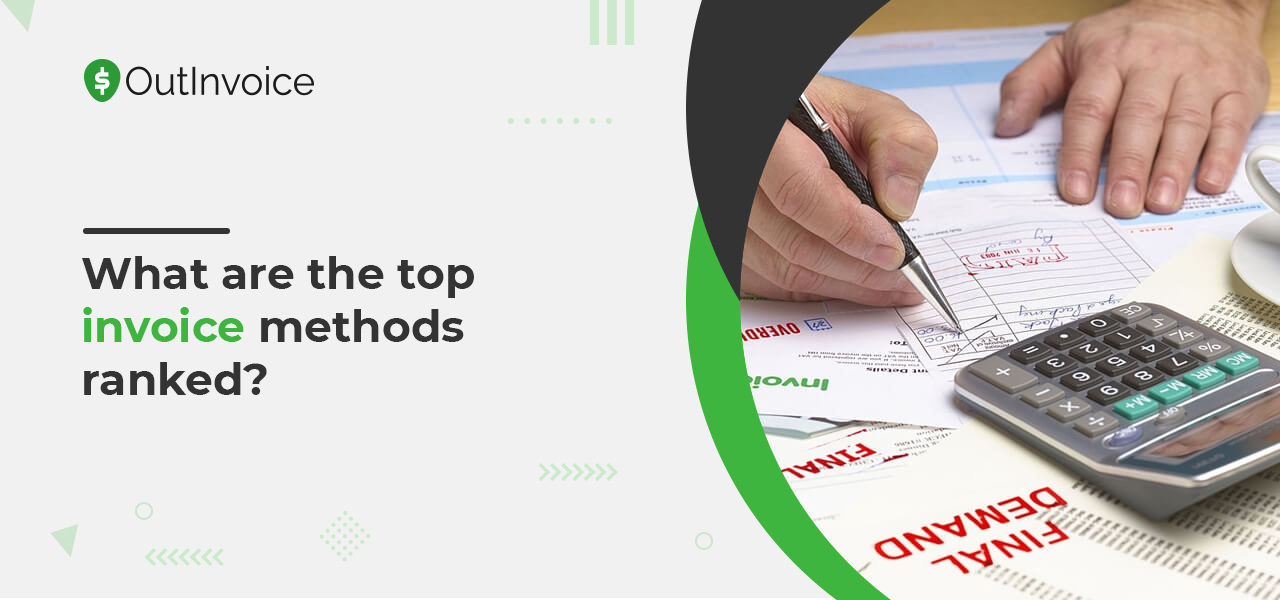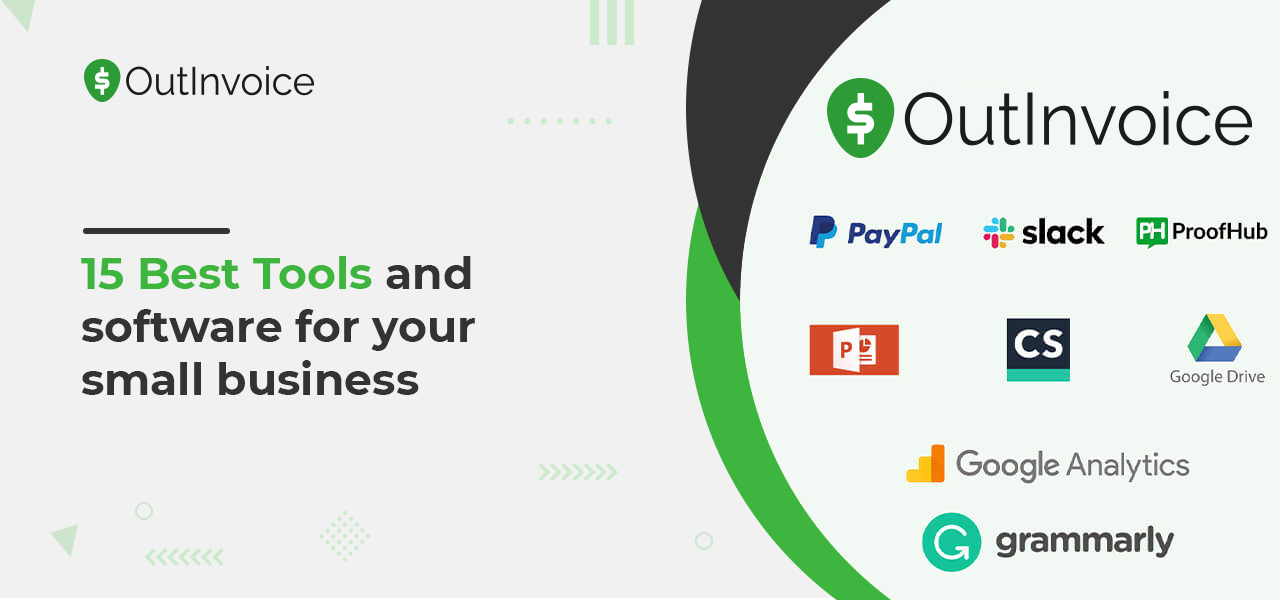
What Are The Top Invoice Methods (e.g. Paper Invoice, Online Invoicing Software) Ranked?
An Invoice is a document that records and itemizes the transactions between buyer and seller. All information is present on the invoice document related to the buyer’s products and services with pricing details.
Invoices are also known as bills and statements, representing transactions between a buyer and seller in the form of a receipt from a store or online records from invoicing software/payment services. Elaborate on all the payment terms and conditions, price, shipping charge, handling charge, and other required terms and conditions during the transactions. It is considered a critical element for accounting internal controls and audits, and all the charges must be approved by higher authorities personnel.
Table of Contents
Process for Creating an Invoices
Every business has its way of managing invoices and its unique purpose. But most invoices contain the same key information, here are listed some important things that must be on the invoice.
Date of Invoice: Indicate the date when you created the invoice.
Clients Details: Provide detailed information about the client like Client name, business name, address, and phone number. It helps the client to be sure the invoice is for him or his company.
Your Business Details: Your client needs to able to contact you by providing your name, your business name, email address, and phone number on the invoice.
List of Products/Services: list all the products and services you have been charing for and provide the individual cost of those products/services.
Total Amount to be Paid: Include the total amount you expect to receive from your client.
Payment Terms and Conditions: You know that each invoice has its payment information, then clear the terms with your client. Must include all the terms and conditions while sending invoices.
Invoice Number: Always keep your invoices with a unique number; make a separate note for the invoice numbers that helps you to match it to your payment history in the future. Clearly differentiate between purchase order and invoice number. (if applicable)
There are different methods of creating invoices like a paper invoice, online invoicing software, etc. Invoicing is an integral part of any business to deal with their payment and taxes. Invoicing evolved from paper to software in this technological world because invoicing software constantly becomes more intuitive and powerful. The advancement of technologies like cloud computing and OCR systems helps to keep track of your business finances online. In this article, you will learn about the top invoice methods (e.g. paper invoices, online invoicing software) and how the invoicing methods are changed over time.
Top Invoices Method
Let’s discuss paper invoices and online invoicing software descriptively and understand the advantages of using each invoicing method.
Paper Invoices

Paper invoices are printed document invoices.
You know that whatever business might belong to, it may be manufacturing, service industry invoicing play an integral part for every business. Invoicing process requires time and has some complications in terms of handling it, mainly when it comes to manual invoicing like paper invoices.
There are many invoicing software tools available in the market today, but most businesses still prefer paper invoicing. PDFs are the top paper invoicing formats for sending and receiving invoices.
Paper invoicing is great, but it requires time to complete the payment process. Every business needs to understand the reason behind it and try to optimize and improve the payment process. For that, every business needs to follow proper steps for paper invoicing.
Process of Creating Paper Invoices
Creating paper invoices must follow the proper steps to eliminate errors and improve the documentation process. According to different companies, these steps may vary, but the basic rules are the same for all businesses. Below are some steps that involve in creating the paper invoices.
Collecting Information
Mainly, Business owners issue and print the invoices then send them to clients. Once the client receives these invoices, they sort a list of the invoices and send them to their company’s accounting department.
Identifying All the Details of Invoices
The invoices received by the client must be verified first to ensure the payment term are correct, and payment details are accurate. The client must check all the information thoroughly and verify that these is correct invoices and have proper information about both client and business with the products/services details. Also, check the bill amount is the same amount for the products/services procured. Finally, check the tax treatment for the invoice.
Approving the Invoices
The invoices have been check, and now it’s time to take approval from higher authorities from your company or by the client itself. The accounting department handles this process either it needs to be approved or not. If any misinformation or discrepancies in the invoice, the client must contact the business owners or supplies and short it out before getting authorization from the concerning person.
Handling the Invoice
The accounting department takes care of all the invoices and records the various expenses in the company’s general ledger. All the invoices are sorted and stored in the archive store in different files according to invoice numbers. The storing of invoices is done carefully and systematically because those invoices can be used in the future.
Invoice Payment
The higher authorities approve all process after checking invoice documentation, and then the accounting department process the payment. The payment is done according to invoice requirements.
Payment Received
The amount that has been sent from the client to the products/services provider business has been received. This is the overall process of the paper invoice.
There are several Challenges to using Paper Invoicing. Some of them are
- Not using the proper way to send the invoices
- Manual error in the paper of the invoice
- Monitoring takes a lot of effort
- Approvals of invoice take times
- Missing the purchase Order numbers
- Missing correct data or information
- Duplication of Invoices
Online Invoicing Software
Online Invoices Software helps businesses to manage their sales by creating invoices and keep track of the payments for sales. It helps to manage your business accounting and tax calculation with real-time reporting to accurately measure the business progress. With this kind of online invoicing software, you can manage your business activity and smoothly manage the invoice process.
It will help you in quick and easy account management with receive payment and track the payment history. Use powerful built-in features to manage recurring features and payments.
Online invoicing software helps you to manage sales and Invoice management, Inventory Management & Control with online Accounting and CRM (Client Relationship Management), and flow up.

Online Invoicing software manages all the paperwork without the use of a single paper.
Invoices cost, quotes, delivery notes, payment methods, and accounting reports are provided on the cloud that an easily accessible at any time from anywhere. You can access the invoices from your mobile if you are not in the office.
For paper-based invoices, you have to do all things manually, the paper, the envelope, the stamp, and the time it takes to get it to the post box. If you are sending several invoices per day, these increase your expenses on unwanted things.
While using online invoice software, you have to be careful while filling the forms online, and there may be some chance where you may enter wrong data that cause a human error that takes twice as long to correct. You have to manually write and send credit notes, as well as new invoices. There is also the possibility of invoices get lost in the huge list of mail.
If you switch to online invoicing software, it will take very little time to send the invoice to the client and get paid quickly. The client will get your email, and you also can receive the money on the same day.
Where most invoicing is capable of many things, such as creating invoices and quotes, managing customers’ queries, and accepting online payment, quotes must be drafted and send the same way as invoices, and if the client accepts them, that can be turned your invoice in professional ways.
Functions of Online Invoicing Software
Easy-to-use: Online invoices are easy to use and help to manage multiple clients at the same time.
Cost: Online invoices save extra expenses, which can lead to managing business expenses.
Payments: Online invoices system provides the proper payment integration system, which helps to manage the costs.
Integration: The system integrates with multiple systems to increase the business process.
Client Management: It manages multiple clients at the same time, easily and cost-effectively.
Tracking: It tracks every record, and we can make changes at any time. The client can receive and review the invoices easily.
Reporting: It helps send a clear overview of all invoices and sends a quick reminder to clients.
Data Migration: You can export your invoices data in an Excel file or any spreadsheet document.
Advantages of Using Online Invoicing Software
1. Generate and Forward Invoices
The online invoicing software manages all financial data from anywhere and anytime. It helps to generate and forward the invoices to clients. It replaces the manual work to create invoices and customize and personalize invoices according to business needs.
2. Simple and Easy Mechanism
You may face that the paper invoicing technique takes a lot of time and effort to either fill out the spreadsheet for invoicing. It takes time and a very lengthy process to send multiple invoices. For handling multiple clients’ invoices, some of it will be frustrating.
For handling multiple clients, invoicing software like OutInvoice can be the best option that helps to create multiple profiles and manage multiple clients at a time. With the help of this kind of invoicing software, you can save a lot of time. While using online billing software, create error-free invoices simply and easily.
Invoicing Software applications have all the required information about the client, like client name, address, invoice number, and payment terms, and other information required for the billing process. You just have to log in and start sending invoices.
3. Automatic Process
As you know, every business wants to increase its efficiency workflow for their business operation. The business Automation process helps them to achieve their goals. Online accounting software can bring automation processing to the business.
The accounting software allows us to create and send invoices. It helps to automate many processes of the business. So a lot of human effort and interference is not required for an automated invoicing system. It will generate invoices for the preferred clients and then send them in few minutes. It saves the cost of billing tasks and also increases the efficiency of the business workflow.
This invoicing automation is also available on invoicing applications, which helps establish good subscription-based procedures and send follow-ups and payment reminders for upcoming past-due invoices.
4. Quick Invoice Delivery
Online invoicing software generates quick invoices for a faster payment process. It can create and send the invoices in a few steps. It allows real-time tracking of the invoices.
It generates invoices faster than manual work.
So, online invoices are much faster than paper invoices which increases the speed of invoice generation. For that, invoicing software like OutInvoice can help you to generate invoices faster.
5. Easy Payments
The online invoice payment is integrated with the invoicing software to ensure that the payment is made on time. It builds the easiest and simplest way for the customers to make payments.
You didn’t have to wait for a week just to send invoices to clients. The process gets shorter in terms of online invoicing software and gets paid faster.
Whereas invoicing software organizes your payment history and customizes your requirements.
6. Secure Platform
While using traditional business practice, paper invoices are used for payment documents, and there are so many chances to lose documents, misplaced and destroyed. No one wants to lose this kind of documents.
That’s why online invoicing software came where there is no chance of such an error. It is the most secure business model for cloud accounting. It keeps all the files safe and secure, and you can create multiple backups for those files. You know that security is always the number one priority for any business.
7. User-friendly and Easy CRM
For paper invoicing methods, a lot of time is needed and is not much user-friendly as invoicing software. It also doesn’t help to manage good customer relationships, and the use of paper is also not environment-friendly.
The invoicing software helps manage to invoice and increases the business’s efficiency smoothly by sending professional invoices to the clients. It creates a brand image of your business and leaves a good impression on the client. You can access information anytime from anywhere. The proper records of bills and accounts also help in auditing.
This invoicing software sends professional invoices with accurate billings and preferred payment methods simply and easily. It offers the features of one-to-one communication between clients, making faster communication and bills with clear objectives and accurate results that promote customer relationship management.
Conclusion
However, online invoicing software is much better for invoice management in saving time, money, and effort than paper invoicing.
Some clients prefer paper invoices instead of online invoicing software as it isn’t necessary for their business to adapt to that advanced technology and its expenses. Some of them may not be comfortable with online payment, or they want to handle invoices and bills through emails and use payment methods of cash and cheques.
Paper invoicing and online invoicing software are the top invoice methods in the business. There are also other methods for invoicing process. It depends on the client and business’s requirements about which method they use for the invoicing process.



